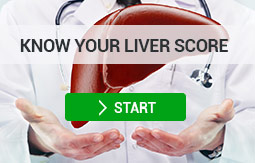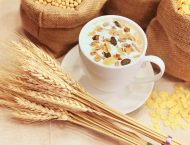Protein is essential in the building, maintaining and repairing of tissues – a role which causes many bodybuilders and health enthusiasts to wholeheartedly endorse getting more of this macronutrient.
People love protein
Over half of American consumers surveyed by NPD marketing firm stated that they’d like to increase the amount of protein that they eat. To meet consumer demand, companies are pumping more proteins into cereals, smoothies and snack bars and many products’ high-protein stats are proudly emblazoned on the front of their packaging.
But how much more do we actually need? While over three-quarters of consumers believe that adequate protein is important for a healthy diet, the majority can’t say what the optimal daily amount is.
How much protein should we be eating?
Adult women require about 46 grams of protein per day and adult men require about 56 grams. While this number depends on age, weight, and level of physical activity, The Institute of Medicine and the Dietary Guidelines for Americans recommend getting at least 10% but not more than 35% of your daily calories from proteins. Find out exactly how much you need by using USDA’s calculator.
For example, a woman maintaining a lean body may choose a diet of 1,500 calories per day. Thus at least 150 calories and not more than 525 calories of her daily calories should be from protein. As there are 4 calories per gram of protein, this is equivalent to eating at least 37.5 grams and not more than 131 grams daily.
To put this in perspective one scoop of whey protein powder isolate is 50 grams of protein. Without consuming any other food, this is a more than sufficient amount for the entire day, for many people.
While this may seem like a benefit, remember that going over the recommended upper limit of protein puts additional strain on internal organs and causes them to operate less efficiently.
But don’t athletes require more proteins in their diet? While very active individuals do require slightly more protein (0.5 – 0.8 grams per pound of body weight per day), if you work out for one hour a few times per week you probably don’t need to take in extra proteins according to the Academy of Nutrition and Dietetics.
How much protein are we eating?
The average American man consumes about 100 grams of protein per day while the average woman consumes about 68 grams. The majority of Americans are likely consuming about twice as much protein as they require for healthy muscle density.
Meat as a protein source
Not only do Americans consume more proteins than they need, they get it from the wrong sources. While protein is traditionally associated with meat, recent research suggests that this is not the best source of protein for optimal health. Meat contains no fiber, high levels of saturated fat, and high cholesterol.
Meat is also associated with a higher risk of developing disease. Based on research conducted by the World Health Organization in England and Germany, vegetarians are 40% less likely to develop cancer than their meat-eating counterparts. Harvard University found that people who consume red meat daily – beef, pork or lamb – have three times the risk of developing colon cancer compared to those who tend to avoid it.
Why? Part of the explanation could be that meat, and especially red meat, is high in saturated fat. According to the American Heart Association, a diet high in saturated fat is associated with a higher risk of heart attacks, strokes and diabetes. Thus, the AHA does not recommend high-protein diets because they can “restrict healthful foods that provide essential nutrients and don’t provide the variety of foods needed to adequately meet nutritional needs.”
Plants as a protein source
Plant-based proteins are low in calories, fat, and cholesterol, contain high levels of vitamins and minerals and are complete sources of proteins.
Plant proteins contain some amount of all the essential amino acids, making each a complete protein source. However, since each plant contains different levels of each essential amino acid, it’s most beneficial to consume a variety of different plants.
Amsety Bars provide a great source of protein which comes from rice. To find out more, click here.
Healthy sources of plant-protein
| Protein Source | Grams of Protein |
| 1 cup of cooked lentils | 18 |
| 1 bunch of raw broccoli | 17 |
| ½ package of tofu | 17 |
| 1 cup of cooked beans | 16 |
| ½ cups of nuts (all types) | 14 |
| 2 slices of whole wheat bread | 8 |
| 1 pomegranate | 5 |
Find out about the nutrition bar that 98% of liver health experts would recommend!
References
huffingtonpost.com
huffingtonpost.com/julie-upton
npd.com
webmd.com
wikihow.com
medicaldaily.com
nal.usda.gov
health.gov
McDougall, J. (2002). “Plant Foods Have a Complete Amino Acid Composition”. Circulation. 105 (25): e197; author reply e197. PMID 12082008. doi:10.1161/01.CIR.0000018905.97677.1F.
pcrm.org

 (442) 244-5115
(442) 244-5115















